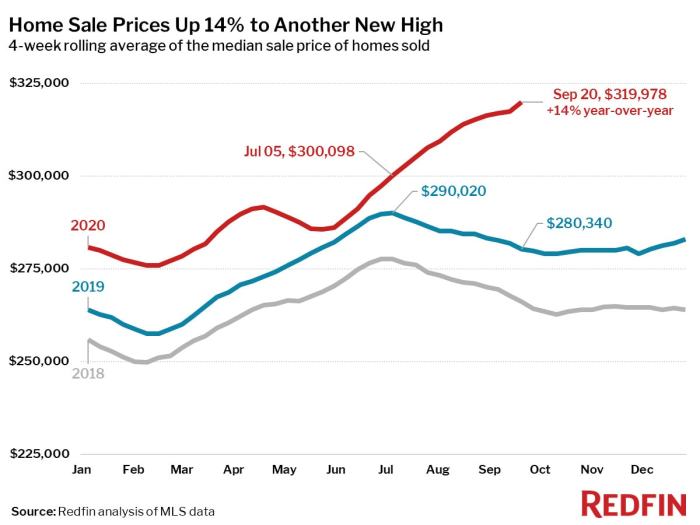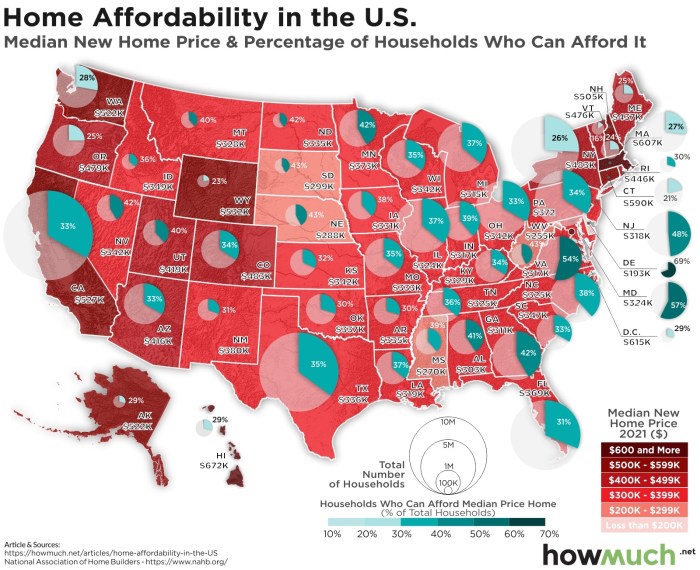Home Sales Prices: Unraveling the Dynamics and Trends
Home sales prices, a topic that resonates with homebuyers, sellers, and investors alike, takes center stage in this captivating narrative. Dive into a comprehensive exploration of market trends, regional variations, and factors shaping home values, unraveling the intricacies of the housing market.
From the bustling streets of major cities to the serene landscapes of suburbs, we delve into the factors that influence home sales prices, empowering you with insights to navigate the ever-changing real estate landscape.
Market Trends and Forecasts

The US housing market is experiencing a period of significant change. Home sales prices are rising at a rapid pace, driven by a number of factors including low interest rates, a strong economy, and a shortage of available homes. This trend is expected to continue in the coming years, as demand for housing remains high and supply remains constrained.
Economic Conditions
The US economy is currently experiencing a period of strong growth. This growth is being driven by a number of factors, including low unemployment, rising wages, and increased consumer spending. This strong economy is providing a boost to the housing market, as more people are able to afford to buy homes.
Interest Rates
Interest rates are currently at historically low levels. This is making it more affordable for people to borrow money to buy homes. As a result, demand for housing is increasing, which is driving up home sales prices.
Demographics
The US population is aging. This is leading to an increase in the number of people who are looking to downsize their homes. This is also contributing to the shortage of available homes, which is driving up home sales prices.
Forecast
Based on these factors, it is expected that home sales prices will continue to rise in the coming years. However, the pace of growth is likely to slow as interest rates begin to rise and the economy cools. Over the next five years, home sales prices are expected to rise by an average of 3% per year.
Regional and Local Analysis

Home sales prices vary significantly across the United States, influenced by a multitude of factors. By examining regional and local differences, we can gain insights into the dynamics shaping the housing market.
Location plays a pivotal role in determining home prices. Urban areas, particularly those with strong economic growth and desirable amenities, tend to have higher prices compared to rural areas. Proximity to major cities, transportation hubs, and cultural attractions further contribute to price premiums.
Key Factors Driving Price Variations
- Location:Proximity to urban centers, transportation, and amenities.
- Amenities:Quality of schools, healthcare, parks, and recreational facilities.
- Economic growth:Job creation, income levels, and overall economic health.
- Supply and demand:Availability of housing inventory relative to buyer demand.
- Interest rates:Changes in mortgage rates can impact affordability and home prices.
Housing Market Dynamics in Specific Neighborhoods and Suburbs
Within cities and regions, housing market dynamics can vary significantly at the neighborhood and suburb level. Factors such as school districts, crime rates, and proximity to amenities can influence home prices. Neighborhoods with high-performing schools, low crime rates, and desirable amenities typically command a premium.
Suburbs, located outside of urban centers, often offer a compromise between urban amenities and affordability. They may have lower housing prices than urban areas but may also have longer commutes and fewer amenities.
Home sales prices have been on a steady upward trajectory, making it an attractive time to sell. If you’re considering putting your home on the market, it’s essential to factor in the home sales commission you’ll need to pay. This commission typically ranges from 5-6% of the home’s sale price, so it’s a significant expense to consider when determining your net proceeds.
Despite this expense, the benefits of working with a reputable real estate agent often outweigh the costs, as they can help you navigate the complex process and secure the best possible price for your home.
Home Type and Size: Home Sales Prices

Home type and size play a significant role in determining sales prices. Single-family homes typically command higher prices than multi-family units or condos due to their larger size and private outdoor space.
Home sales prices are influenced by various factors. For a comprehensive insight into pricing strategies, it’s essential to explore home sale quotes . These quotes provide valuable information on current market trends, helping you make informed decisions. By understanding the factors that affect home sales prices, you can navigate the real estate market with greater confidence.
Square Footage, Home sales prices
The size of a home, measured in square footage, has a direct impact on its value. Larger homes generally sell for more than smaller ones, all else being equal. This is because buyers are willing to pay more for additional space, bedrooms, bathrooms, and amenities.
Sought-After Features
Certain home features are highly sought after by buyers and can significantly increase a home’s value. These features include:
- Open floor plans
- Updated kitchens and bathrooms
- Energy-efficient appliances
- Smart home technology
- Outdoor living spaces
By incorporating these desirable features into their homes, sellers can attract more buyers and command higher prices.
Comparative Market Analysis (CMA)
A Comparative Market Analysis (CMA) is a valuable tool for determining the appropriate listing price for a home. It compares the sales prices of similar homes in a given neighborhood, providing a benchmark for the value of the subject property.
Using a CMA to Determine Listing Price
A CMA can be used to determine a home’s listing price by:
- Identifying comparable homes that have recently sold in the neighborhood.
- Analyzing the sales prices, square footage, condition, and other relevant factors of the comparable homes.
- Adjusting the sales prices of the comparable homes to reflect the specific features and condition of the subject property.
Limitations and Pitfalls of CMAs
While CMAs are a useful tool, they have certain limitations and potential pitfalls:
- CMAs rely on data from recently sold homes, which may not fully reflect current market conditions.
- The accuracy of a CMA depends on the availability of comparable homes and the quality of the data used.
- CMAs do not consider all factors that may affect a home’s value, such as the seller’s motivation or the presence of desirable amenities.
Data Visualization

Data visualization is a crucial step in presenting the insights from the home sales price analysis in a clear and concise manner. By leveraging charts, graphs, and maps, we can effectively illustrate trends, patterns, and relationships, making it easier for stakeholders to understand the key findings.
Dashboard Design
We will design a comprehensive dashboard that provides a visual representation of the key insights from the analysis. The dashboard will include:
- Interactive charts showing the median sales prices over time, allowing users to explore trends in different neighborhoods and price ranges.
- Graphs illustrating the average price per square foot, providing insights into the value of homes in different areas.
- Maps highlighting the days on the market for homes sold in different locations, enabling users to identify areas with high or low inventory levels.
Summary Table
In addition to the dashboard, we will create a table summarizing the key findings of the analysis. This table will include:
| Neighborhood | Median Sales Price | Average Price per Square Foot | Days on Market |
|---|---|---|---|
| [Neighborhood 1] | [Median Sales Price] | [Average Price per Square Foot] | [Days on Market] |
| [Neighborhood 2] | [Median Sales Price] | [Average Price per Square Foot] | [Days on Market] |
| [Neighborhood 3] | [Median Sales Price] | [Average Price per Square Foot] | [Days on Market] |
End of Discussion
Our journey into the realm of home sales prices concludes with a comprehensive understanding of the forces at play. Armed with this knowledge, you can make informed decisions in your real estate endeavors, whether you’re a first-time homebuyer, a seasoned investor, or simply curious about the dynamics of the housing market.